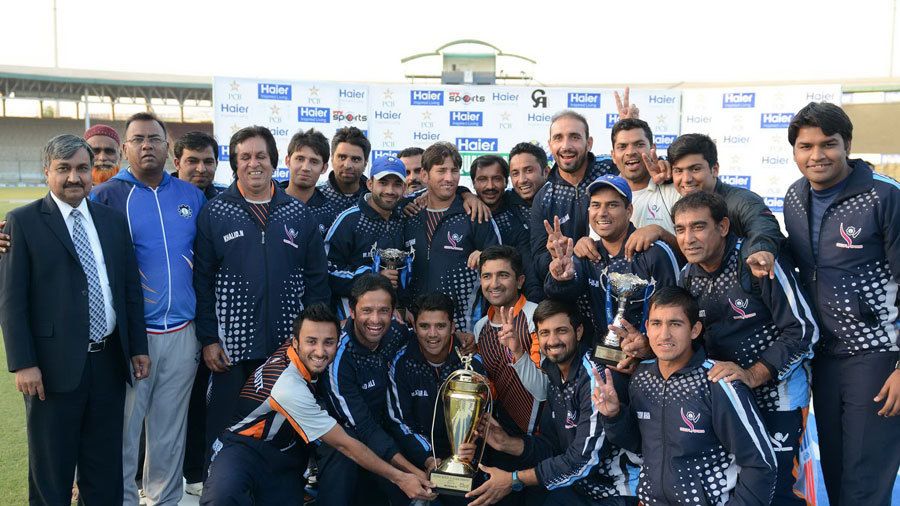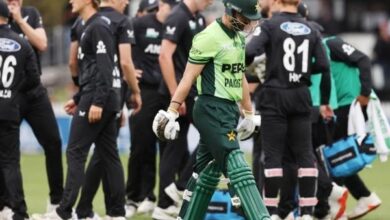60th edition of the Quaid-e-Azam Trophy:Facts and figures

The 60th edition of the Quaid-e-Azam Trophy (QeA), Pakistan’s premier first-class tournament, ended last week, with Sui Northern Gas Pipeline Limited (SNGPL) winning the event for the fourth time after defeating WAPDA by 103 runs in the final at National Stadium Karachi. The tournament was largely in the news for the wrong reasons. From picking players through a draft to the scheduling of the matches, it received criticism from various quarters, including Misbah-ul-Haq and Azhar Ali. We take a look at a few numbers that emerged in the latest season of Pakistan’s first-class cricket.

Average first-innings total: 235
To understand how difficult the conditions were for batsmen or to appreciate the extent to which bowlers enjoyed the upper hand, take a look at the average first-innings total in the tournament: 235. That is the lowest in premier first-class tournaments around the world in 2017 and 2017-18. The plight of batsmen in the QeA Trophy has been under scrutiny for a few years, but this season was a shocker even by the tournament’s own standards – 235 is a massive 46 runs fewer than the previous season’s average. The table below shows Sri Lanka, West Indies, Zimbabwe and Pakistan’s domestic competitions have the lowest first-innings average totals. Those four are also the lowest-ranked Test nations in the ICC rankings, albeit not in that order.
Runs per wicket: 22.68
If the ratio of runs per wicket is anything to go by, then 2017-18 has been the most challenging season for batting in Pakistan. It beats even the 1986-87 season, when the batsmen were up against the likes of Malcolm Marshall, Courtney Walsh, Tony Gray and Patrick Patterson. In 69 matches this season, 52,641 runs were scored at the cost of 2321 wickets, making the average runs/wicket (22.68) the lowest in the history of first-class cricket in Pakistan. While the bowlers weren’t exactly close to matching the talents of Marshall or Patterson, they were helped by underprepared wickets. The matches were played with only a two-day gap, including one for travelling, with many venues hosted seven four-day matches in the space of six weeks.
Best bowling average in a season: 9.61
The bowler who made most of the conditions was 38 year-old Aizaz Cheema. Although it would be harsh to suggest that he earned wickets for reasons outside his bowling skills, the evidence strongly suggests the pitches and the Duke balls significantly helped him. In nine matches for Lahore Blues, Cheema took 60 wickets at 9.61, the lowest average by a bowler in Pakistan with at least 50 wickets in a season. He bettered Tony Lock’s average (10.72) during the left-arm spinner’s visit to Pakistan as a member of the Marylebone Cricket Club in 1955-56. Four of the lowest ten bowling averages in a first-class season in Pakistan, as the table shows below, are from the last two seasons.
Batsmen with over 500 runs at above 50: 1
While the bowlers have found the pitches heavenly, that isn’t how the batsmen would view it. The only one to accumulate 500 runs at an average of 50-plus was UBL’s 24-year-old middle-order batsman Saad Ali – 957 runs at 68.53 with the help of three centuries. To find another season in Pakistan that produced only one batsman who scored 500 runs at above 50, you have to go back to 1971-72, when the QeA Trophy was not held and Javed Sadiq scored 509 runs at 72.71 for Rawalpindi across Punjab Governor’s Gold Cup and the BCCP Trophy.
Worst season for Fawad Alam, average: 40.71
To describe the plight of Australian batsmen in the Bodyline Ashes, Don Bradman’s average from the series (56.57 compared to 99.94) is often cited. To understand how difficult it is becoming to bat in Pakistan, let’s have a glance at the numbers of a batsman who in the last few seasons has set the standard. Fawad Alam’s numbers in first-class cricket in Pakistan before the 2017-18 season were 9561 runs at 58.29 (the second-highest average in the country after Zaheer Abbas’ 60.62), but in this year’s edition he could muster just 570 runs at 40.71. The average is still respectable enough, and indeed the third-highest for a batsman with 500 runs in the tournament, it is his career’s lowest. Never before had he averaged less than 48 in a home season.
Two-day matches: 5
Two-day matches are a rare sight in first-class cricket. The Port Elizabeth Test was the first since 2005 that lasted two days, but Pakistanis witnessed five of 69 matches in the QeA Trophy finishing inside two days. For context, none of the 90 games in the Ranji Trophy this season has ended in two days and just one – thanks to Mohammad Amir’s ten-wicket match haul for Essex – out of 56 games in the County Championship Division One was over inside six sessions. Even in Afghanistan, there was only one two-day match. What is more, as many as 11 games in the QeA Trophy produced a result within 180 overs, meaning 11 matches could have been over in two days if not for slow over rates or bad weather.
Sub-hundred totals: 25
For the first time in Pakistan’s first-class cricket, the first three innings of a match had sub-100 totals. It happened when Lahore Blues were bowled out for 89 and 70, and SNGPL for 92 in Hyderabad. It even prompted Azhar Ali, a member of the winning team, to question the pitch. Overall, 25 innings in the 69-match season ended under 100. In comparison, in 126 matches in the County Championship 2017, only on eight occasions were teams bundled out for less than 100. What’s more surprising is that 18 innings in the QeA Trophy lasted just 30 overs, which equates to a session’s play.
Lowest first-class total in 2017: PTV (37)
Pakistan Television regained the first-class status it lost in 2014 and will have to requalify for the next season if the relegation format is retained. Making a comeback after three years, PTV had a torrid season, winning just one match. To add insult to the injury, it registered the lowest total in first-class cricket around the world this year when Khan Research Laboratories (KRL) bowled them out for 37 in 17.3 overs. It is also the third-lowest total in first-class cricket in Pakistan since 2000.
Most lbw dismissals in a match in Pakistan: 8
For the first time, an innings had eight lbw dismissals in a first-class match in Pakistan, for PTV against United Bank Limited’s (UBL) bowling attack in Sialkot. All eight wickets were taken by fast bowlers. It was just the tenth instance in 245 years of first-class cricket of eight batsmen falling LBW, but the second in 2017, with a game in the Sheffield Shield 2016/17 also seeing eight batsmen trapped LBW.
While there was no evidence of foul play, PTV’s management alleged that umpire Tahir Rasheed, who made six of the eight decisions, was biased in favour of his brother, who was UBL’s head coach Umar Rasheed.
SNGPL’s supremacy: fifth title in six seasons
SNGPL won the Quaid-e-Azam Trophy for the fourth time after having won it in 2008-09, 2014-15 and 2015-2016, but in the last six seasons it was their fifth first-class silverware as they also won the President’s Trophy in 2012-13 and 2013-14 (the premier tournament for departments in those two seasons). SNGPL’s win-loss ratio (7.00) in the last six seasons is by far the highest for any team. Since 2012-13, they have won 42 matches and lost just six. While they have had the likes of Azhar Ali, Mohammad Hafeez, Asad Shafiq and Misbah in the ranks, it was their bowling that won them the last two finals. Bilawal Bhatti’s figures of 8 for 56 against UBL in 2015-2016 and Samiullah Khans 8 for 62 this season are the two best bowling figures in the grand finals of Pakistan’s first-class tournaments.




